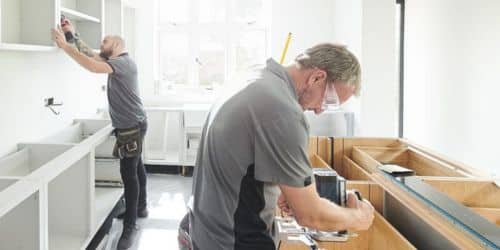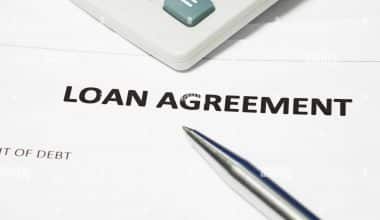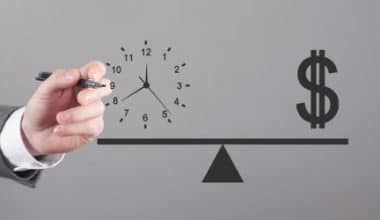Home improvements can get pricey. You don’t have to pay out of pocket, which is good news. You can finance the price of your home’s upgrades and repairs by taking out a loan for them. Financing home improvements is a smart move if you have enough cash set aside in an emergency savings account to pay your bills for three to six months. It might be simple to obtain a loan from your general contractor, but you should also take the time to research other financing options for home improvements. If you don’t want to tap into your equity or use the entire limit on your credit cards for the project, a home improvement loan might be a good option. Just be aware that if you have bad credit, you will face high-interest rates.
Financing Home Improvements
Choosing a financing method is a crucial step in any home improvement project. A home remodel can be financed in several ways, including those that use the equity you’ve accrued in your house and nonequity options like credit cards and personal loans. Once you have the necessary funding, you can begin your home improvement project. While home improvements can be exciting, financing them requires careful planning.
Use cash savings to pay for home improvements because there are no interest costs and no debts left afterward, whether it’s time to update the kitchen or make an urgent roof repair. But if you have that much financial flexibility, you should consider yourself fortunate. There are many different types and sizes of home improvement projects, from replacing the water heater to demolishing walls.
Home improvements can be expensive, and financing is frequently required. Fortunately, you have a variety of options to choose from so you can find the one that best meets your needs. Banks, credit unions, and a variety of online lenders offer personal loans for home improvements. Since home improvement loans are typically unsecured, they frequently carry higher interest rates, especially if your credit is fair or poor.
Options for Financing Home Improvements
#1. Personal Loans
If you want something low-risk, a personal loan might be one of the best options for financing home improvements. A personal loan is an alternative source of funding for home improvements if you don’t have sufficient home equity to draw from. You won’t put up your house as security for a personal loan because they are unsecured. In comparison to HELOCs, or home equity lines of credit, these loans can therefore be obtained much more quickly. In some circumstances, you might be able to receive loan funding the following business day or even on the same day.
Although fixed or adjustable rates are both possible for personal loans, they are typically higher than those for a home equity loan or HELOC. However, if your credit is good or even excellent, you can probably find a reasonable rate.
A personal loan typically has a two- to five-year repayment period, which is less flexible. Furthermore, closing costs will probably be incurred by you as well. Using personal loans is one of the best options for financing home improvements.
Personal loan pros:
- Speedy online application procedure
- Quickly available funds, perhaps even on the same business day
- No home mortgage is necessary.
- Suitable for urgent home repairs
Personal loan cons:
- Greater interest rates compared to mortgages
- Reduced borrowing thresholds
- Less time to repay a loan
- Possible early payment penalties
- Late fees on loans are frequently very high.
#2. Home Equity Loans
With a home equity loan (HEL), you can borrow money using the equity you’ve built up in your house. By determining the value of your home and deducting the remaining balance owed on your current mortgage loan, you can determine your equity. You cannot refinance your current mortgage with a home equity loan. If you already have a mortgage, you would repay it each month in addition to paying back the new home equity loan. Your home is pledged as security for a home equity loan. As a result of the loan being secured by the property, lenders can offer lower rates. If you require a large amount of borrowing, a home equity loan is a good choice due to the low, fixed interest rate. Using home equity loans is also one of the best options for financing home improvements
Home equity loan pros:
- Typically, interest rates on home equity loans are fixed.
- Five to thirty years are the possible loan terms.
- A maximum of 100% of your equity may be borrowed.
- Excellent for large-scale projects like home remodels
Home equity loan drawbacks
- Increase the monthly loan payment for homeowners who have outstanding balances on their initial loans.
- The majority of banks, lenders, and credit unions impose origination fees and additional closing costs.
- You must carefully plan your budget for home improvement projects because it is distributed as a single lump sum.
#3. HELOC (Home Equity Line of Credit)
Another fantastic way to borrow against the equity in your home without refinancing is through a home equity line of credit (HELOC). Although it functions more like a credit card, a HELOC is comparable to a home equity loan. It allows you to borrow money up to a predetermined limit, pay it back, and then borrow more money. This is also one of the top options for financing home improvements.
HELOC interest rates are adjustable; they can go up or down during the loan term, which is another distinction between them and home equity loans. However, interest is only charged on the portion of your HELOC that is still unpaid, or the amount you have borrowed. Your maximum HELOC amount will be determined by your credit rating, income, and house value.
The loan term for HELOCs is fixed and typically ranges from 5 to 20 years.
Benefits of a HELOC include
- Low or no closing costs.
- Payment varies according to the loan amount.
- You can use the money again after paying it back with a revolving balance.
HELOC drawbacks
- The majority of loan rates are erratic, so your rate and payment may rise.
- Your bank may change the repayment terms.
- Home equity loans typically have higher interest rates.
#4. FHA 203(k) Rehab Loan
The costs of your mortgage and home improvements are combined into one loan with an FHA 203(k) rehab loan. There’s no need to submit two separate loan applications or cover two sets of closing costs. Rather, when you buy the house, you finance both the purchase of the home and the home improvements. As a result of the government’s backing for these loans, you will enjoy special advantages, including a low down payment requirement and the ability to apply even with less-than-ideal credit.
The benefits of a FHA 203(k) rehab loan includes:
- Combines the loan for your home purchase and improvements.
- Your deposit may be as little as 3.5 percent.
- The majority of lenders only demand a credit score of at least 620 (although some may go as low as 620).
- It’s not necessary to be a first-time home buyer.
Drawbacks of FHA 203(k) rehab loans are :
- Specifically made for older and incomplete homes.
- FHA loans come with both upfront and ongoing mortgage insurance.
- The price of the renovations must be $5,000 or more.
- 203k regulations restrict the use of funds for particular home improvement projects.
- The loan closing process may take a while.
#5. Cash-Out Refinance
A cash-out refinance is an additional well-liked strategy for raising funds for home improvement projects. You can choose this option if you want to refinance into a mortgage loan with a larger balance than the one you currently have. You then use the remaining funds to pay off your current mortgage and keep the rest. When your mortgage rate can be lowered while taking cash out, a cash-out refinance is typically the best home improvement loan. This is only applicable if present market rates are lower than your current rate. This is one of the options for financing home improvements.
Additionally, you might be able to shorten the term to pay off your house faster. Remember that higher closing costs are associated with cash-out refinances, and they are charged on the entire loan balance, not just the cash-back. Therefore, to make this strategy worthwhile, you’ll probably need to find an interest rate that is substantially lower than your current one.
Advantages of cash-out refinance:
- You would keep making a single mortgage payment.
- You have the option to simultaneously reduce your interest rate and loan term.
- Any purchase is possible with the money.
Negative aspects of cash-out refinancing
- A sizable loan amount is subject to closing costs.
- The balance of the new loan will be higher than the balance of your mortgage.
- The term of your loan is reset upon refinancing.
- If rates rise, your mortgage rate may also.
Credit Cards
Credit cards are also one of the best options for financing home improvements. You can use your credit card to pay for minor improvements and repairs. Credit cards are one of the priciest methods of financing home improvements, though, unless you have an unusually low, fixed interest rate. Much longer repayment terms are available with loans for home improvements. Credit cards ought to be reserved solely for emergencies because of this.
How to Get a Home Improvement Loan
A home improvement loan functions similarly to a mortgage. After comparing interest rates and monthly payments, and getting ready your financial records, you should apply for the loan.
#1. Look Over Your Finances
Examine your credit score as well as your debt-to-income ratio. Your credit score determines your creditworthiness in the eyes of lenders. Generally speaking, lower rates go to those with higher credit scores. Additionally, you should be aware of your debt-to-income ratio (DTI). It provides lenders with your maximum comfortable borrowing amount.
#2. Evaluate Loan Providers and Loan Types
Comparing costs and terms with other forms of financing will help you decide which loans are best for you. Keep an eye out for any advantages that a lender may offer, such as rate discounts for signing up for autopay. Additionally, keep an eye out for drawbacks like high late payment fees or low minimum loan amounts.
#3. Assemble the Loan Documentation
Be ready to provide documentation to prove your ability to pay your bills and your financial information. Paystubs, W-2s, and bank statements are a few examples of this. If you’re self-employed, you may also include 1099s.
#4. Submit the Loan Application
Depending on the lender you select, you might be able to apply for a loan entirely online, over the phone and via email, or even in person at a nearby branch. Your mortgage application might occasionally include a combination of these strategies. Depending on the kind of loan you’re applying for, your lender will examine your application and probably request a home appraisal. If your financial situation is sound, you’ll be approved and given funding.
Financing Home Improvements With Bad Credit
When applying for financing, both your credit score and report are important. That holds for secured loans like HELOCs and cash-out refinances as well as unsecured loans like credit cards and personal loans. With or without a secured loan, having excellent credit increases your chances of obtaining a lower interest rate. In contrast, having poor or even fair credit will result in a significant increase in your personal loan or credit card interest rates. Some personal loans have APRs as high as 35% for borrowers with lower qualifications.
Unsecured loans also have exorbitant origination costs as well. Some loan providers levy fees that can reach 6% of the loan amount. Here are some characteristics of loans for home improvements with bad credit to compare.
#1. APR
The annual percentage rate (APR) accounts for all fees levied by the lender as well as the total cost of a loan. APRs range from 6% to 36%, but borrowers with bad credit can anticipate paying a rate toward the top of the range. APR can be used to compare personal loan costs to those of other forms of financing.
#2. Monthly Payments
A loan’s monthly payment can be previewed for various interest rates and repayment terms using a home improvement loan calculator. This can assist you in determining the loan offer you need to maintain your spending limits.
#3. Payment Conditions
One to seven years are the typical repayment terms for home improvement loans, though some lenders have fewer options. Finding a term that strikes a balance between lower monthly payments and higher overall interest costs is important when choosing a loan term.
#4. Fast Funding
A lot of lenders claim they can fund a loan in less than a week, and some even claim they can give you the money the same day you apply. Look for a lender that provides quick funding if you need to pay for an immediate repair or a project that is already underway.
How to Get a Home Improvement Loan With Bad Credit
Although your credit score plays a significant role in whether you are approved for a personal loan, there are some things you can do to increase your chances.
Pay your bills on time. The primary factor affecting your credit score is your payment history. Paying your bills on time and building your credit both look good on loan applications.
Reduce your debt-to-income ratio by paying off existing debt. Most lenders want proof that you have enough money each month to cover both the additional loan payment and your regular expenses.
Add another signer or borrower. You may increase your chances of approval or obtain a lower rate by including a reference on your application who has excellent credit and a high income. But if you can’t, your co-applicant is responsible for paying back the loan.
Opt for a secured loan. To receive a lower interest rate on a secured loan, you must include collateral with your application, such as a car or savings account. If you fail to make payments, the lender may seize the collateral.
Pre-qualify. You can pre-qualify online with many lenders to get an idea of your possible rate and loan size. The procedure doesn’t call for a hard credit pull, so your score won’t be impacted. It can also help you understand what kind of loan you might be eligible for.
Home Improvement Loan Alternatives for Bad-Credit Borrowers
The Federal Housing Administration insures home improvement loans, which resemble conventional mortgages but have softer qualification standards. To be eligible for any FHA-insured loan, your credit score typically needs to be at least 500.
#1. FHA 203(k) Renovation Loan
A 203(k) loan allows you to refinance your current mortgage and include the cost of home improvements in the new loan. Borrowers must also satisfy the credit requirements of the lender and not have experienced a foreclosure within the previous three years.
It can take a while to complete the 203(k) loan process. As part of the pre-qualification process, you must collaborate with a mortgage lender, a general contractor, and a HUD consultant.
#2. Family Loans
Asking a friend or relative to lend you money might be worthwhile if you urgently require a small amount of cash but are ineligible for another type of loan. Family loans don’t require excellent credit and let you and your friend or relative choose the interest rate and repayment schedule.
Your bond with the lender is put up as collateral for this kind of loan, which could lead to problems if you’re not careful.
What Are the Options Instead of Refinancing?
Two of the most popular methods for homeowners to access equity without refinancing are home equity loans and HELOCs. Both give you the option to borrow funds using the value of your house.
What Type of Loan Is Offered to Investors Who Want to Remodel Repair a Property and Then Quickly Sell It for a Profit?
Real estate investors use short-term fix-and-flip loans to buy and make improvements to a property to resell it for a profit. Minor repairs to a full reconstruction of an existing home are among these improvements.
Can I Take a Loan From My IRA to Make Improvements to My Home?
Loans from IRAs do not exist. Instead, there may be circumstances where you can withdraw IRA funds without incurring a penalty; however, doing so could have detrimental financial effects. Sadly, the IRS prohibits you from borrowing money or taking out a loan from any kind of IRA. There are some ways to access your IRA funds early without incurring a penalty, but there are stringent guidelines you must follow.
What Is Not a Good Reason to Refinance?
This is because refinancing a mortgage can be time-consuming and costly at closing. One of the main reasons to refrain from refinancing is that it will take too long for you to recoup the closing costs of the new loan.
What Are Two Types of Loans Used to Finance the Construction of a Property?
- Construction-to-permanent loan
- Construction-only loan
What Is Loan Flipping?
When lenders repeatedly woo and persuade homeowners to refinance their homes, this practice is known as loan flipping. Additionally, lenders influence homeowners to take out increasingly larger loans. In a typical scenario, a lender will repeatedly entice and persuade a homeowner to refinance their mortgage while also convincing them to take out more debt each time.
Conclusion
Your financial situation will determine which loan is best for home improvements. A HELOC or home equity loan might be appropriate if you’ve built up a significant amount of equity in your house. You could also use a cash-out refinance to finance home improvements if you can do so without increasing your monthly payment or lengthening the term of your current loan. If refinancing or equity options are unavailable, those who want to make home improvements may use a personal loan or credit card.
Related Articles
- GRANTS FOR HOMEOWNERS FOR REPAIRS: Tips & Guide
- BEST HOME IMPROVEMENT LOAN IN 2023
- Owner, Check Out 5 Tips On How To Rent Your Property!
- CREDIT SCORE FOR MORTGAGE: Detailed Guide
- BEST HOME EQUITY LINE OF CREDIT: Rates, How it Works, Calculation & Difference
- HOW TO GET A HOME EQUITY LOAN WITH BAD CREDIT






